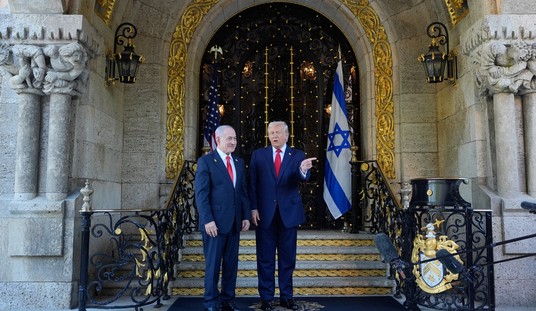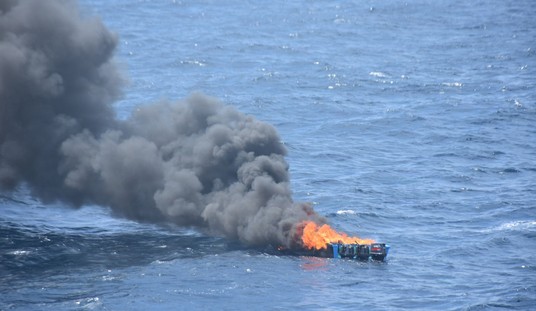
On Tuesday, Louisiana Governor Bobby Jindal announced his energy plan. It was the second such plan to come out of America Next, Jindal’s policy shop that is plainly developing a national policy agenda ahead of the presidential campaign that Jindal is obviously preparing (like all potential candidates, Jindal merely says he’s considering a run but hasn’t finally decided yet). The plan is less new and exciting than Jindal’s first installment, his health care plan, but it represents the current consensus within the GOP on energy policy, offers a few new wrinkles, and overall presents a serious alternative to Obama Administration energy policy. Perhaps just as importantly, his proposals on health care and energy are expected to be followed by others on major issues; they signal the pressure Jindal will put on other potential GOP presidential candidates to offer substantive policy proposals that will elevate the caliber of the 2016 debate.
There was a lot of buzz when Jindal announced his healthcare plan, and for good reason. Republicans and conservatives have been late to offer and promote healthcare alternatives, often abandoning the field to a debate between terrible statist policies and the status quo. Jindal, as one of the party’s genuine healthcare experts, is well-situated to offer something new, as well as a coherent framework for gathering together the disparate strands on healthcare that already have significant support within the party.
On energy, while Jindal is also well-positioned to discuss the issue as the governor of a major energy-producing state – and one that faced a huge energy-industry mess with the Deepwater Horizon spill in 2010, the handling of which was terribly botched by the Obama Administration, to Jindal’s evident public frustration – the situation is different. John McCain in 2008 and Mitt Romney in 2012 both had good and fairly similar platforms on energy, and while it wasn’t enough to carry them to victory, most observers on the Right regarded energy as one of the strengths of those otherwise-uninspiring tickets. The Congressional GOP has remained solidly unified on issues like the Keystone XL pipeline and opening federal lands to exploration, but its proposals have been constantly stymied from becoming law. So, the logical path for a 2016 candidate to take on energy is to stay the course and focus on getting the existing ideas implemented.
For the most part, if you read through the executive summary of Jindal’s plan here, or the full 48-page outline here, you will see that Jindal is largely doing just that. When I pressed him on a blogger conference call on Tuesday on how his plan differs from the McCain and Romney energy plans, he noted that there were some specific new ideas, like allowing wind and solar power companies to use the master limited partnership format now used by many oil and gas companies, but argued that what has really changed is the facts on the ground and the growing need for a new direction in energy policy away from that embraced by Obama.
That’s a very short summary, by the way; an answer from Governor Jindal to any question is a firehose of information. But his core point is that we’re in the middle of an energy-producing boom in this country, yet failing to fully exploit it in a way that could offset and ameliorate many of the weaker areas of our economy and provide more independence from skeevy foreign sources of energy – for example, energy production on federal lands lags far behind that on private lands. As Jindal summarized in an op-ed for Fox News:
For instance, approving the Keystone XL pipeline—which this administration has dithered on for five long years—would help build bridges with the Canadian government, whose Prime Minister, Stephen Harper, reportedly views President Obama as his “frustrator-in-chief.” And increasing global supplies of natural gas could over time lessen Russian President Putin’s energy leverage among the nations of eastern and central Europe…Our plan includes a series of tangible proposals that can lower energy prices, spark economic growth, and generate additional royalty revenue for both states and the federal government.
Other parts of the plan are a bit timid and reflect the politics of Iowa in particular, such as Jindal’s proposals regarding ethanol. At the end of 2011, the massive $6 billion a year corn-based ethanol subsidy finally expired. This was a victory for free markets – except that it didn’t eliminate the similar subsidy for similar non-corn-based fuels. And it didn’t eliminate the Renewable Fuels Standard that mandates use of ethanol, by requiring the sale of an ethanol-gasoline blend. And more:
The industry enjoys subsidies through farm bill energy title programs such as the Rural Energy for America Program and the Bioenergy Program for Advanced Biofuels; tax breaks such as the Alternative Fuel Vehicle Refueling Property Credit, Master Limited Partnerships, and biodiesel tax credits; and various Departments of Energy and Transportation programs. Worse yet, on Sept. 30 [2013], …Iowa…Senator [Tom] Harkin (D-IA) proposed billions more in new ethanol subsidies such as those for blender pumps, storage tanks, and biofuels pipelines.
Some of those proposals didn’t make it into the 2014 farm bill…but:
Less than a month after signing the farm bill into law, the president proposed new subsidies for ethanol blender pumps in his FY 2015 budget proposal…Buried on page 158 of the “Analytical Perspectives” document, released Monday, is up to $200 million in new advanced energy manufacturing tax credits for the “construction of infrastructure that contributes to networks of refueling stations that serve alternative fuels,” or in other words, more subsidies for corn ethanol blender pumps and other alternative fuel infrastructure projects.
Jindal’s approach to all this nonsense is correct in theory: eliminate it. But in practice, as a nod to the politics of Iowa, he suggests that this be done gradually, a process that requires the sustained political will to re-win this battle every year for a period of years, no matter the political standing of the White House and the various players in Congress:
The success of the ethanol industry over the past decade suggests that a gradual phase-out of the Renewable Fuel Standard (RFS) mandate would allow this maturing industry to compete and thrive on a level playing field with other forms of energy. Because these fuels will continue to play a vital role, we must ensure that they do so within an overall framework of market competition—one which eschews government-imposed mandates.
However, while government should not pick winners and losers in the marketplace, it also should not make abrupt and radical policy changes that disincentivize investment. In short, the government should not turn specific sectors from “winners” to “losers” overnight. Instead, federal policy should provide a gradual transition away from all sector-specific subsidies and mandates, including requirements like the RFS. In addition, the federal government should continue to fund basic research and development into more efficient forms of ethanol and biodiesel.
This is disappointing, but also – perversely – a sign that Jindal has serious enough ambitions to eschew purity in favor of a proposal that won’t kill him in Iowa.
Finally, there’s “climate change.” Jindal has had his share of reporters asking him for confessions of faith on this issue, which its proponents regard as a religious matter. Jindal has responded bluntly:
Now for the inconvenient truth: Global warming has become a religion for many on the Left. For most radical environmentalists, their response to any questioning of their views on climate change is simply to yell “Heretic!” This is not a logical, rational, or scientific way of approaching public policy.
Furthermore, it does not help the cause of objective science that many climate activists often use climate change as an anti-capitalist Trojan horse for things they want to do anyway—stop people from driving cars, promote more “sustainable,” i.e., slow to non-existent, economic growth, and engage in massive transfers of wealth from the U.S. to various countries in the developing world, many of which have deeply corrupt governments.
And yet, Jindal’s own view is not one of wholly rejecting the possibility that carbon emissions could be bad for the environment, but rather to propose that any solutions be evidence-based and not put America at a disadvantage relative to other carbon-energy-using countries. That goes to the real heart of climate science, the part that even the more rational believers in the concept of carbon emissions as a climate threat recognize as a subject of real and continuing scientific uncertainty. Even if you accept that too much human carbon emissions could lead to too much change in the global climate (i.e., a non-trivial impact) in a period that is too soon for today’s humans to tolerate (the sun will burn out millions of years from now, but that’s so long in the future we’re not worried), you still have to define “too much” and “too soon.” And that’s exactly where today’s climate models have a record of almost complete failure in projecting the impact of human activity on the vast and complex system of the Earth’s oceans, ice caps, plant life, etc., as a powerful essay by Steven E. Koonin, a scientific believer in “climate change” in Friday’s Wall Street Journal, explained:
Even though human influences could have serious consequences for the climate, they are physically small in relation to the climate system as a whole. For example, human additions to carbon dioxide in the atmosphere by the middle of the 21st century are expected to directly shift the atmosphere’s natural greenhouse effect by only 1% to 2%. Since the climate system is highly variable on its own, that smallness sets a very high bar for confidently projecting the consequences of human influences.
A second challenge to “knowing” future climate is today’s poor understanding of the oceans. The oceans, which change over decades and centuries, hold most of the climate’s heat and strongly influence the atmosphere. Unfortunately, precise, comprehensive observations of the oceans are available only for the past few decades; the reliable record is still far too short to adequately understand how the oceans will change and how that will affect climate.
A third fundamental challenge arises from feedbacks that can dramatically amplify or mute the climate’s response to human and natural influences. One important feedback, which is thought to approximately double the direct heating effect of carbon dioxide, involves water vapor, clouds and temperature.
But feedbacks are uncertain. They depend on the details of processes such as evaporation and the flow of radiation through clouds. They cannot be determined confidently from the basic laws of physics and chemistry, so they must be verified by precise, detailed observations that are, in many cases, not yet available.
In short, Bobby Jindal’s energy plan may not be as exciting or revolutionary as some of his other policy proposals, but it is a reasonable and responsible Republican energy agenda, and one that will challenge other 2016 GOP presidential contenders to match or exceed its promise for American economic growth, energy independence, political practicality and scientific responsibility.














Join the conversation as a VIP Member